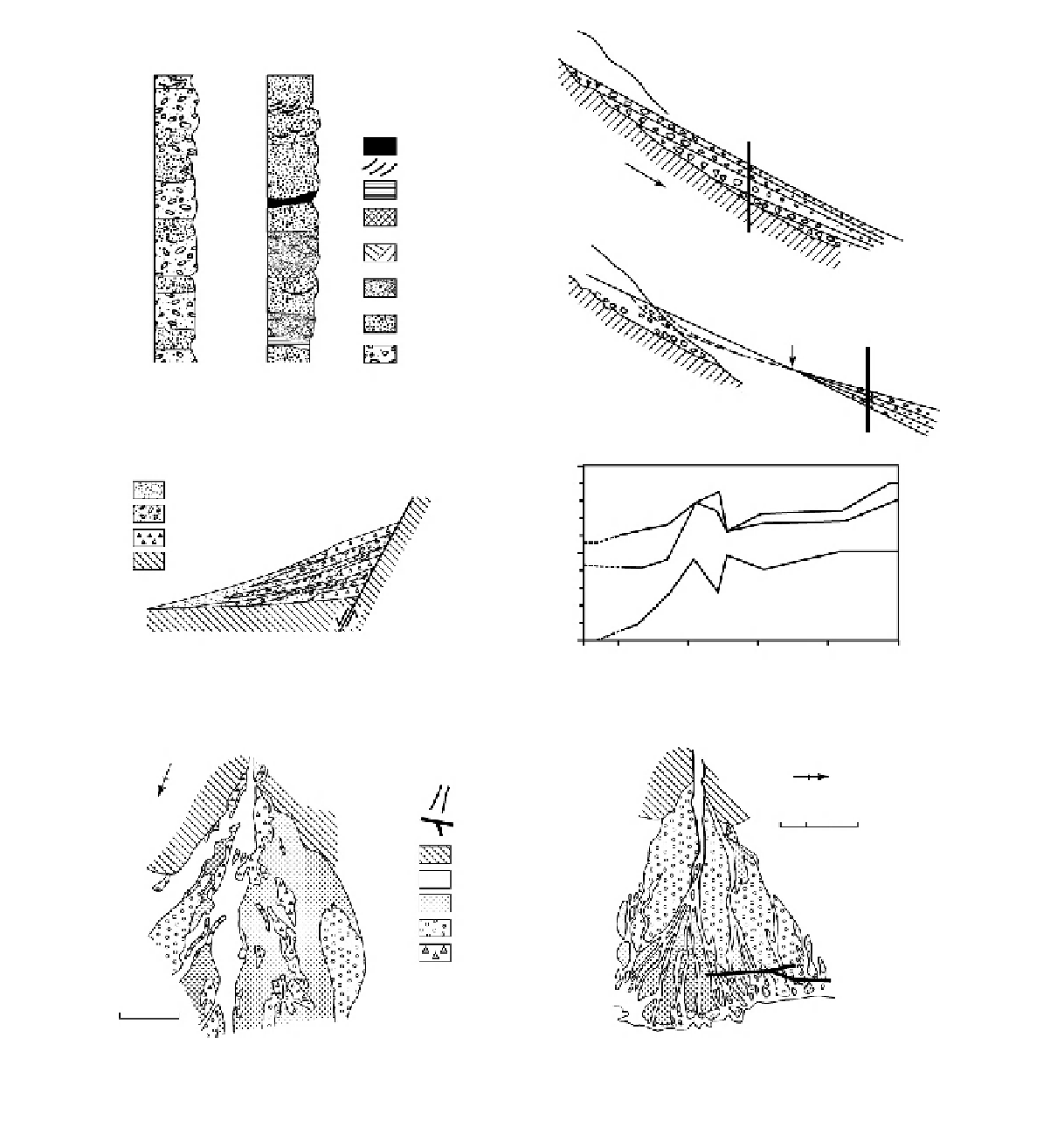Geoscience Reference
In-Depth Information
(i) Sedimentary sequence models
(ii)
Coarsening up or fining up?
Aggrading Fan
Trollheim Type
sedimentary
sequence
Scott Type
sedimentary
sequence
Fining-up
sedimentary
sequence
Downfan fining
away from
bedrock contact
Fm
Sr
Sh
Sp
Sandy mud
Rippled sand
Bedded sands
Plane cross-bedded
sands
Trough cross-bedded
sands
Trough cross-bedded
gravels
Massive structureless
gravels
Debris flows
Prograding Fan
St
Fanhead trench.
Cutting into progressively
coarser sediment
(and bedrock)
Gt
Coarsening-up
sedimentary
sequence
Intersection
point
Gm
Gms
(b)
PROXIMAL DISTAL FACIES VARIATIONS
(i)
Schematic Model
(ii)
Ceporro Fan, South East Spain
100
Channel gravels
Sand
Gravel
Debris flow
Bedrock
Sheet gravels
Silt sheets
50
Debris flows
0
650
400
300
200
100
0
FAN TOE
Distance downfan (m)
FAN APEX
(c)
SPATIAL FACIES VARIATIONS
(i)
Trollheim Fan - Deep Springs Valley
(ii)
Hanaupah Canyon Fan - Death Valley
N
Fanhead trench
Faults
Bedrock
Recent channel deposit
Younger fan deposit
Older fan deposit
Debris flow
N
0
3
km
100m
Figure 14.5
Alluvial fan sedimentary sequences. (a) Vertical facies variations: (i) sedimentary sequence models of Trollheim
type and Scott type, after Miall (1978); (ii) coarsening-up or fining-up? Schematic model for proximal and distal locations. (b)
Proximal-distal variations: (i) schematic model, after Rust (1979); (ii) downfan variations in proportion of facies exposed in fan
sections on Ceporro fan, Almeria, southeast Spain (after Harvey, 1984b). (c) Spatial facies variations: (i) Trollheim fan, California
(after Hooke, 1967): apex area of a proximally aggrading fan; (ii) Hanaupah Canyon fan, Death Valley, California (after Hunt and
Mabey, 1966): a proximally trenched, distally aggrading fan.

